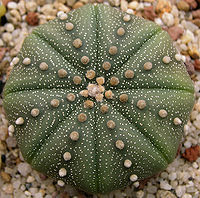
Back Konvergente evolusie Afrikaans Converchencia evolutiva AN تطور تقاربي Arabic Канвергентная эвалюцыя Byelorussian Конвергенция (биология) Bulgarian Konvergentna evolucija BS Convergència evolutiva Catalan Ebolusyong pagtagbo CEB Konvergence (evoluce) Czech Konvergent udvikling Danish
Convergent evolution is a process in biology. It occurs when two species from different lines develop the same traits or features. This happens because they live in similar habitats, and have to develop solutions to the same kind of problems.[1]



This has evolved in appearance and behaviour to be so like a large cat that it was originally classified in the Felidae, but in fact it is closely related to the mongoose
Similarity in traits can occur in two ways. Both species might have acquired the trait by descent from a common ancestor. In this case the structures are homologous. An example is the tetrapod limb, which has been inherited from early tetrapods in the late Devonian/early Carboniferous, about 360 million years ago. On the other hand, both might be independent adaptations to similar conditions in their habitat. In this case the structures are analogous. Convergent evolution leads to analogous features.
- ↑ "Online Biology Glossary". Archived from the original on 2010-02-01. Retrieved 2008-05-03.
{{cite web}}: CS1 maint: bot: original URL status unknown (link)